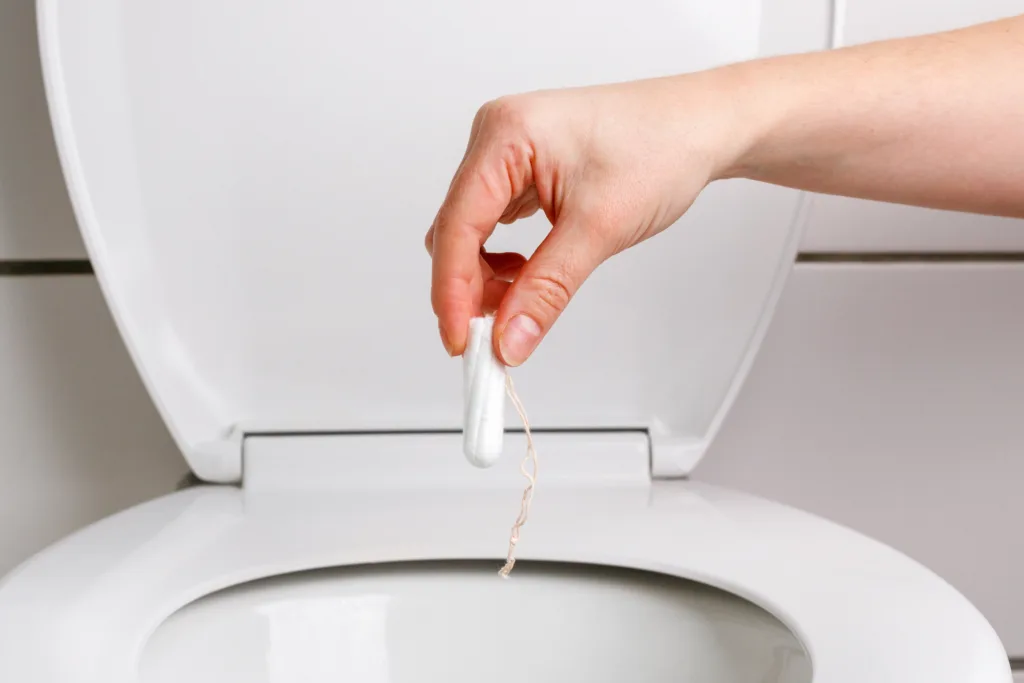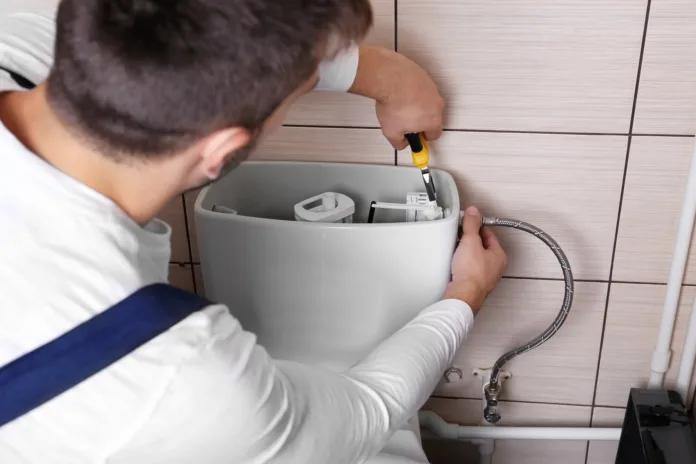The modern lifestyle revolves around convenience. Seeking the most straightforward, quickest way to do daily tasks guides our daily practices, especially personal hygiene. However, one common practice has sparked considerable debate: is it safe to flush tampons down the toilet? This question concerns individual plumbing systems and addresses broader environmental considerations.
Some people flush tampons due to a need for more awareness about the potential plumbing and environmental problems they cause. Compared to disposing of them in a trash can, the convenience of flushing them away also plays a significant role in this behavior. Additionally, societal taboos and discomfort around menstruation can lead individuals to seek the most discreet disposal method, often resulting in the choice to flush them down the toilet.
Understanding the impact on plumbing
Initially, it might seem harmless to flush a small, absorbent tampon. However, tampons are designed to expand and absorb liquid, which can cause significant problems in your plumbing. Unlike toilet paper, designed to disintegrate quickly in water, tampons retain shape and size, leading to potential blockages.
When flushed, a tampon travels through your home’s plumbing to the sewer or septic system. During this journey, the tampon can get caught on rough edges within the pipes or entangle with other non-biodegradable materials, creating a blockage. These blockages can cause toilets to back up, leading to messy and potentially costly situations.
Flushing a single tampon is unlikely to break a plumbing system immediately, but it can contribute to potential problems. While modern plumbing is designed to handle a certain amount of waste and toilet paper, it must be built to process items like tampons.
A single tampon might not cause an instant blockage, but it can get caught in areas with existing buildup or narrow passages and start accumulating other debris. Over time, this can lead to a significant blockage, increasing the risk of damage to the plumbing system. It’s a cumulative risk where each flushed tampon adds to the potential for a blockage, and sometimes, even one tampon could be the final trigger for an existing issue.

Early signs of a blockage in toilet plumbing can include:
- Slow draining: After flushing, if the water drains more slowly than usual, it’s often an early indication of a partial blockage in the pipes.
- Gurgling sounds: Unusual noises like gurgling or bubbling coming from the toilet or nearby drains can be a sign that air is trapped due to a blockage in the plumbing.
- Water level changes: If the water level in the toilet bowl is unusually high, low, or fluctuating without apparent reason, it may indicate a blockage affecting the water flow.
Identifying and addressing these signs promptly can prevent more severe plumbing issues.
To address such problems, many homeowners turn to their local plumbing service provider. These professionals often encounter blockages caused by flushed tampons and can attest to the inconvenience and expense of resolving these problems. The consensus among plumbing experts is clear: flushing tampons is a risky practice that can lead to significant plumbing issues.
Environmental concerns
The impact of flushing tampons extends beyond just the immediate plumbing concerns. Once they enter the sewage system, tampons contribute to the more significant problem of sewage-related debris. In some cases, they can end up in rivers, oceans, and beaches, contributing to the growing concern of marine pollution.
Wastewater treatment plants are designed to handle organic waste and toilet paper but are not equipped to process items like tampons efficiently. Consequently, these items can become part of sewage sludge, which might be used as fertilizer. Meanwhile, they may bypass the treatment process entirely, ending up in natural water systems. Overall, improper tampon disposal threatens marine life and affects the health of our water ecosystems.
Proper disposal methods
The ideal way to dispose of tampons is to wrap them in toilet paper or their original wrapper and discard them in a trash can. This method is both hygienic and environmentally responsible, preventing plumbing blockages and reducing the risk of pollution in water systems. Many public restrooms provide particular sanitary bins for this purpose, and it’s advisable to use these facilities when available. This approach respects the limitations of plumbing systems and contributes to environmental conservation efforts.
In addition to appropriate disposal methods, there’s a growing market for biodegradable and eco-friendly menstrual products. These products are designed to minimize environmental impact, offering a sustainable alternative to traditional tampons.
Conclusion
While flushing tampons might seem convenient, it’s neither safe for your plumbing system nor environmentally friendly. The risks of blockages, the burden on plumbing service providers, and the environmental impact make it clear that alternative disposal methods are preferable. By choosing to dispose of tampons responsibly, individuals can contribute to the health and safety of their plumbing systems and the environment.


